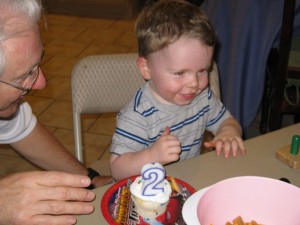The Opening of Vision: “Crying For A Vision” by David Michael Levin
A key quote from Levin:
“Crying, of course, is involuntary. But the experience of crying, with which we are all familiar, can be taken up by the self, taken to heart, and turned, through the gift of our thought, into a PRACTICE of the self. The practice is concerned with the cultivation of our capacity for care — Crying becomes a critical social practice of the self when the vision it brings forth makes a difference in the world, gathering other people into the wisdom of its attunement.”
Crying as a PRACTICE, a discipline like yoga or meditation or Focusing, a social practice for CULTIVATION OF OUR CAPACITY FOR CARE!!!
Dave Young, Focusing Teacher in Colorado, brought attention to the work of David Michael Levin, a Focuser and philosopher-colleague of Eugene Gendlin, creator of Focusing, particularly Levin’s book, The Opening of Vision, Chapter 2, “Crying for a Vision.” Here are Dave’s comments interspersed with quotes from Levin. I include the entirety, since most will not have the Levin book at hand (original discussion happened on The Focusing Discussion e-list, joined at www.focusing.org , under Felt Community).
Dave says:
[Kathy]You challenge us brilliantly & beautifully, with your question: “So, just wanting people to look and then ask themselves, “What is this about humans being ‘touched and moved’ to tears, and how does it relate to guiding oneself and others during Focusing?”
I’m presenting some quotes, with a bit of my own commentary, from the best philosophical writing on crying that I know, this from one of Gene’s closest philosophical colleagues, himself a Focuser, David Michael Levin. It’s found in his marvelous book, The Opening of Vision, Chapter 2, “Crying for a Vision”.
“This work on vision began, not with a vision, but with an experience of crying. Crying for the earth, the earth itself, whose devastation I see all around me. Crying over the plundering of the land. Crying from the depths of my ancestral body for the victims of the Holocaust. Crying for the Indians massacred in my country — “
Let me urge our discussion of crying, as Focusers, begin here: with specific experiences of our crying, not merely of our sense of crying in general. And let it include our own crying & our own struggles with crying.
Levin makes a startling claim, based on his Focusing-oriented experiences: “With crying, I begin to see, briefly, and with pain. Only with the crying, only then, does vision begin.”
Perhaps carefully, caringly examining our own specific experiences of crying we can bring Levin’s claim within us.
Levin: “Our eyes are not only articulate organs of sight; they are also the emotionally expressive organs of crying. The site where vision takes place is sometimes a site where a very different kind of process takes place. We will now give some thought to the character of this process. What is crying? Is it merely an accidental or contingent fact that the eyes are capable of crying as well as seeing? Or is crying in the most intimate, most closely touching relationship to seeing? Is crying essential for vision?”
Understand that Levin is a Focuser. Therefore, as he will point out later, vision is never divorced from the body, and in particular, vision is never divorced from what he calls the body’s “moodedness” or as he says, “our capacity for care, ‘Sorge’, feeling: our care-taking capacity, that is, as visionary beings.” More strongly, he says, “Crying is visionary feeling, and feeling is inherently closer to a sense of wholeness than the disembodied intellect.”
This, then, is what Levin means when he says that crying & “vision” are linked, when through his question he implies that crying is “essential for vision”.
Levin: “Only human beings cry. Animals are beings endowed with sight; but only we are capable of crying. What does this show about us? What does this show TO us? Is it this capacity for crying, then, which ennobles our vision, makes it human? And is it not the ABSENCE of this capacity which marks off the inhuman? By the ‘inhuman’ I mean the monstrous and the inwardly dead: the Nazi commandant, for example, and his victim, the Jew, locked into a dance of death, neither one, curiously, able to shed a tear: for different reasons, their eyes are dry, empty, hollow.”
Very strong, what Levin is challenging us to examine. And yet, on a deeply felt-sensed level, we know this. I would hold that, in any discussion of crying, the state or rather the stopped-processing of not-crying must also be closely examined, experientially, in ourselves and in others. What, societally, that stops us from crying is, of course, what we most need to cry about. And as this need is a stopped-processing, that means the need always remains within us, waiting, crying to come forth.
Levin: “What does this capacity [for crying] make visible? What is its truth? What is the truth it sees? What does it know as a ‘speech’ of our nature? How does it guide our vision?”
Certainly, these are questions which we, as Focusing/Listening guides need to address.
Levin: “Crying is not something we ‘do’. Crying is the speech of powerlessness, helplessness — As a response to what history has made visible, crying calls for vision, for thought, for understanding; we need to SEE what IT make VISIBLE.”
Levin points what, to me, is a key in crying: that crying isn’t a self-chosen act. Though we do, of course, choose to embody-open ourselves up to seeing what calls for crying. Yet crying, genuine crying always comes as a kind of cleansing & joining gift. But more on this later, when I have time to better think it through, based on my own personal experiences.
Continuing & developing this thought, Levin states,
“Crying, of course, is involuntary. But the experience of crying, with which we are all familiar, can be taken up by the self, taken to heart, and turned, through the gift of our thought, into a PRACTICE of the self. The practice is concerned with the cultivation of our capacity for care — Crying becomes a critical social practice of the self when the vision it brings forth makes a difference in the world, gathering other people into the wisdom of its attunement.”
This will take an unbundling I cannot do now. But know: crying does make a difference. Kathy, it’s not only pointing to meaning, but to a special type of meaning. And this meaning is a connecting, an act that reaches out and makes a difference in the world. This I know from my own crying for abused & neglected clients who have been alienated from their capacity to cry for themselves and, worse, have become alienated from the truth that they are worth crying over. And that is only one example. But this points to a powerful truth which, when we guide those who have greatly suffered, we should not shirk from. Always, of course, we see how our crying affects, not only is affected by, in our intense “interacting first”. But we must never rule away our crying out-of-hand.
Additionally, when I allow myself to cry for my clients, not only does this crying — not all crying, not the crying of pre-empting or communicating this is too much, but the crying of being deeply touched which can be held & presented — not only does this crying usually bring for depths & healing from within my clients or rather from within our interacting. I myself, by our genuineness, by my congruence, am far less likely to be drained & burned out. This healing capacity of crying should also be noted in our discussion.
Levin gives us a starting point to understand the types of “moods” in crying, paralleling yours, Kathy:
“We could think of our eyes as capable of three kinds of mood: (i) the ontical moodedness of everyday seeing, which can differentiate and articulate what it beholds only in a more or less dualistic, objectifying, re-presentational manner; (ii) the transitional moodedness of a seeing which cries for vision, immersed in painful seeing, immersed in the processes of its subjectivity; and (iii) the moodedness of a more joyful, more fulfilled seeing, clear and bright and articulate, and capable of being deeply touched and moved, even at a distance, by what it is given to see.”
— As a taste of where this leads, permit me one more Levin quote:
“Crying is the rooting of vision in the ground of our [universal, shared & interacting] needs: [our] need for openness, [our] need for contact, [our] need for wholeness.” Dave
And Franc Chamberlain, Certified Focusing Professional in Ireland, also dives into Levin’s work, with more on Vision and Crying:
“Hello, I haven’t been following closely, so apologies if I’m repeating — I’ve recently been dipping back into some of the Levin books, such as The Opening of Vision — and there’s also a questioning about tears in the early part of The Philosopher’s Gaze, in the section entitled ‘Blindness, Violence, Compassion’ (which seems to link the two threads of tears and (non) violence).
After discussing briefly T.S. Eliot’s ‘I see the eyes but not the tears/this is my affliction’ he goes on to say:
“What must we say about philosophers? When have philosophers seen the tears? When have they given thought to what, without words, tears are saying? Is the history of philosophy a history of blindness, a discourse disfigured by traces of this terrible, unavowable affliction? Is there something inherent in the philosophical gaze that compels this affliction to remain unavowable? (The Philosopher’s Gaze, 1999 p.4)
So, is there something in the philosophical gaze that both arrests crying whilst at the same time prevents us from knowing that crying is arrested? So, could we discuss ‘crying’ in a philosophical sense, and even discuss the arrest of crying, without even knowing that our own crying is a stopped process? Because western philosophy often splits itself off from ‘experiencing’ even when speaking about ‘experience’
Franc
Dave and Franc and Levin all pointing to the experience that crying is essential to our caring, having compassion, “seeing” the truth of this world, and acting on its behalf. “Being touched and being moved” as essentially human, and essential-to-humanness.
CREATIVE EDGE FOCUSING(tm): SELF-HELP SKILLS FOR HOME AND WORK
Free Downloads:
Complete Focusing Instructions Manual (17 pages)
“Ajas” Instantaneos Mini-Manual
Creative Edge Focusing (www.cefocusing.com ) teaches two basic self-help skills, Intuitive Focusing and Focused Listening, which can be applied at home and at work through The Creative Edge Focusing Pyramid.
Based upon Gendlin’s Experiential Focusing (www.focusing.org ) and Rogers’ Empathic Listening, our website is packed with Free Resources and instructions in these basic self-help skills. Learn how to build Support Groups, Conscious Relationships, and Creative Edge Organizations based upon these basic skills of emotional intelligence.
You can try out “Focusing: Find Out What Is Bothering You.”
Click here to subscribe to Creative Edge Focusing(TM)’s Instant “Ahah!” e-newsletter and get the latest exercises first!!!
Click here for a free Intuitive Focusing Mini-Course
Click here for a free Focused Listening Mini-Course
See Core Concept: Conflict Resolution to find a complete mini-course on Interpersonal Focusing and Conflict Resolution, including Rosenberg’s Non-Violent Communication, Blanchard’s “One Minute Apology,” Patricia Evan’s books on Verbally Abuse and Controlling Relationships, McMahon’s Beyond The Myth Of Dominance, and much more.
See Core Concept: Intimate Relationship to find a complete mini-course on increasing intimacy and sexuality, including the “Sharing Your Day” exercise, Listening/Focusing Partnerships for The Way of Relationship, untangling and equalizing desire, tantric sexuality, and much more.
Download complete Instant “Ahah!” Mini-Manual, in English and Spanish, from CEF Website, or download from links at top of this blog.
Find links to free articles, personality tests, multi-media Self-Help training, Classes and workshops
Dr. Kathy McGuire, Director
Creative Edge Focusing (TM)
www.cefocusing.com

